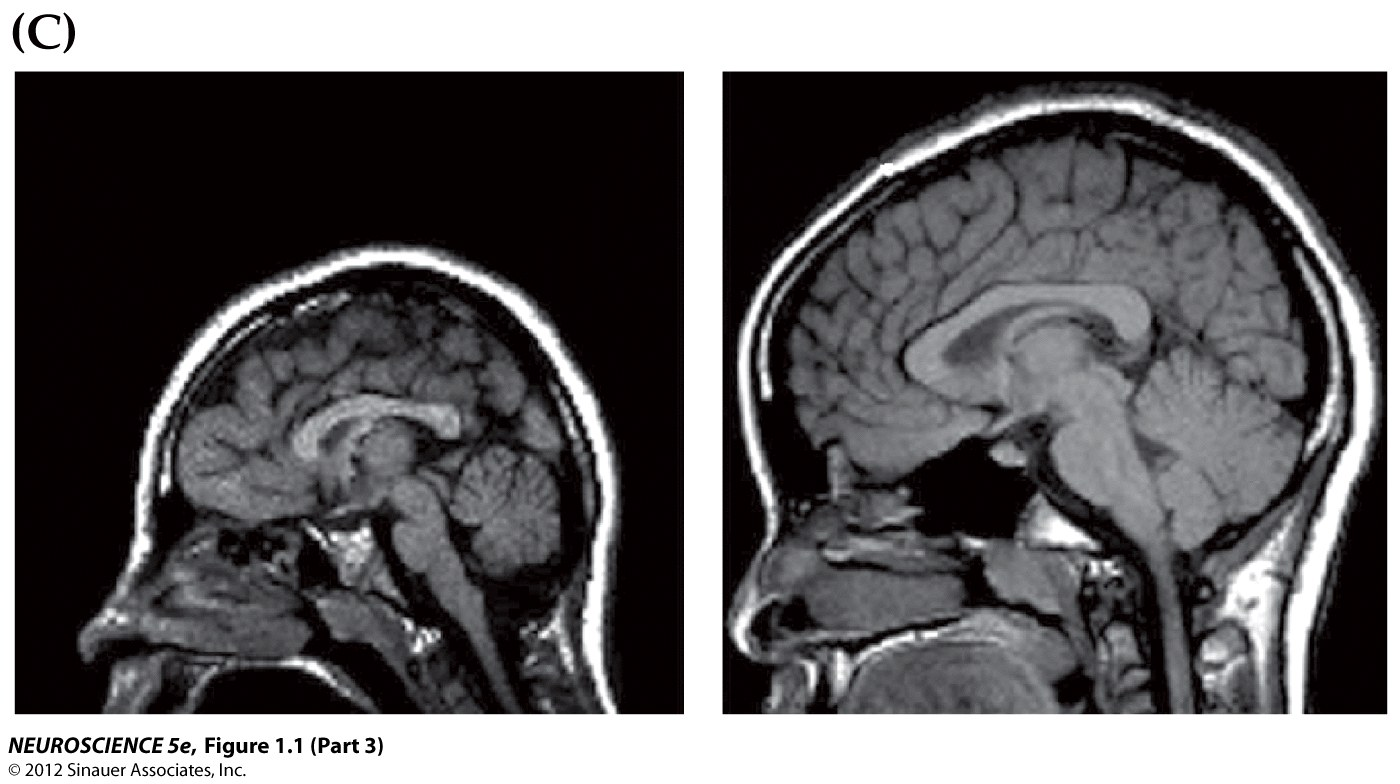L1 Structure and Organization of Nervous System
一、The Cellular Components of The Nervous System
1. Reticular Theory 网状理论
Reticular theory (Camillo Golgi): each nerve cell was connected to its neighbors by protoplasmic links, forming a continuous nerve cell network, or reticulum (Latin for “net”)
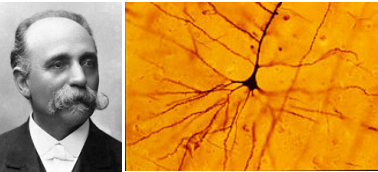
Because of the limited staining methods, the cells cannot be separated apart. Therefore they put the reticular theory.
2. Neuron Doctrine 神经元学说
Neuron doctrine (Santiago Ramón y Cajal & Charles Sherrington): nerve cells are discrete entities and they communicate with each other by means of specialized contacts-synapses.

Cells of the nervous system
Nerve cells (neurons,神经元): specialized for electrical signaling over long distances.
Glia cells (neuroglia, glia,神经胶(质)): supporting, rather than generating electrical signals.
- More numerous than neurons–3:1.
1. Neurons
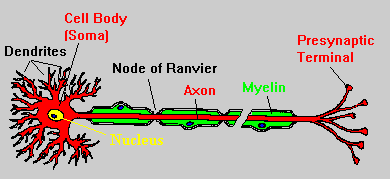
| Axons | Dendrite |
|---|---|
| Take information from neuronal soma | Bring information to neuronal soma |
| Smooth surface | Rough surface (dendritic spines) |
| Hundreds of micrometers to meters in length | Usually very short |
| Can have myelin | No myelin insulation |
Neuron Morphologies
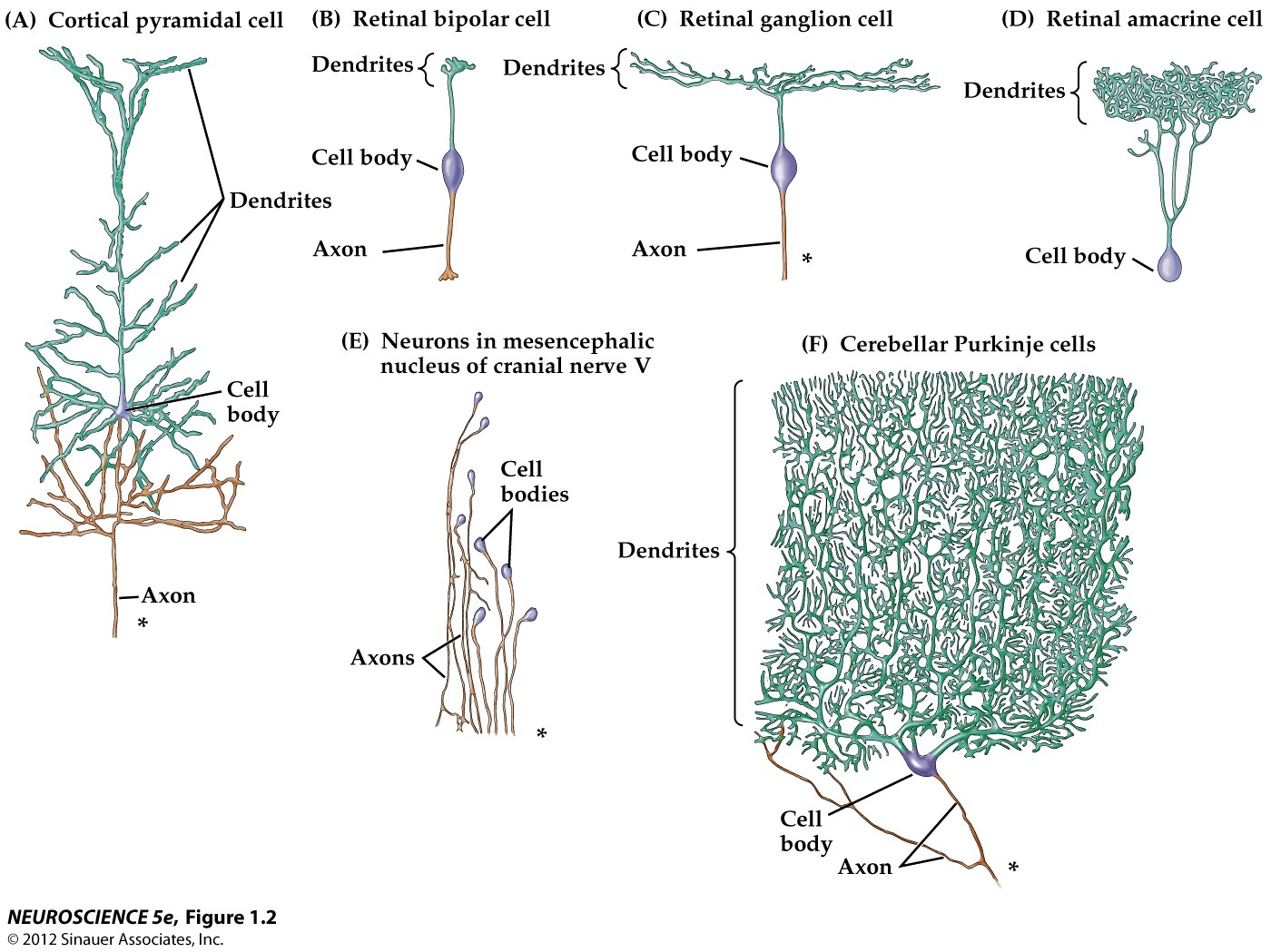
Neurons classified by function
Neurons can be classified into :
- Sensory neuron: Collect information and transmit information
- Interneuron
- Motor neuron
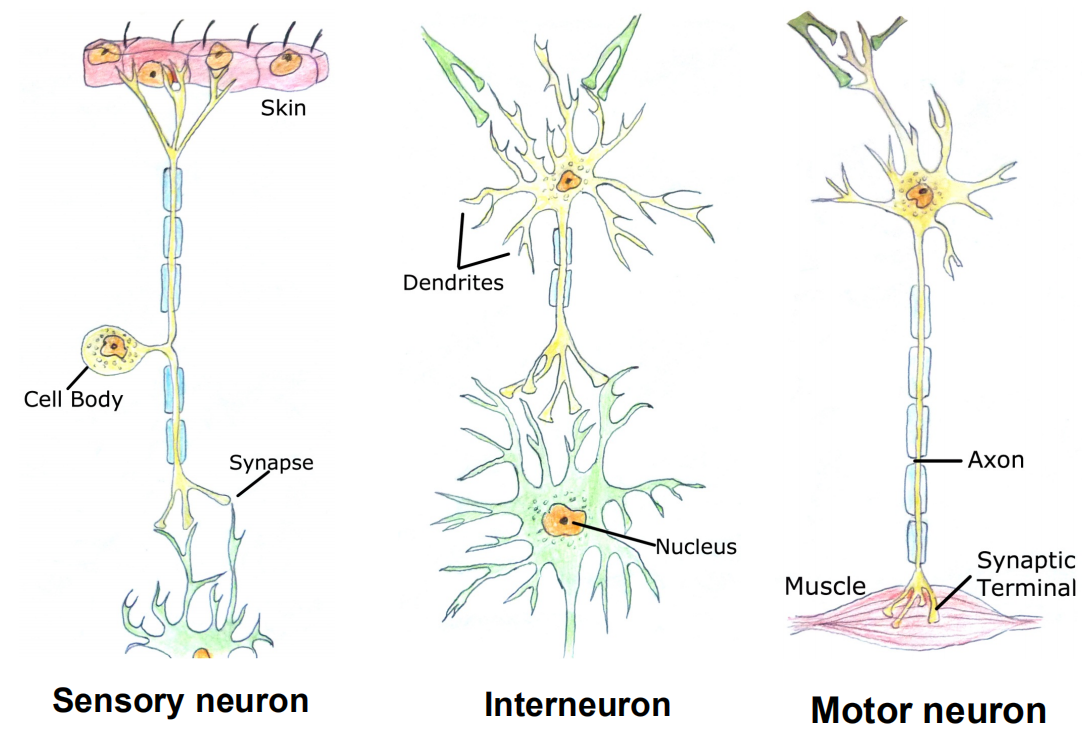
2. Glia 胶质细胞
maintaining the ionic milieu of nerve cells.
Modulating the rate of nerve signal propagation.
Modulating synaptic action by controlling the uptake and metabolism of neurotransmitters at or near the synaptic cleft.
Providing a scaffold(脚手架) for neural development.
Aiding or inhibiting recovery from nerve injury

Astrocyte 星形细胞
Location: central nervous system (brain and spinal cord)
Morphology: elaborate local processes; star-like (“astral”)
Function:
- maintain an appropriate chemical environment for neuronal signaling; retain the characteristics of stem cells
- secreting substances that influence the construction of new synaptic connections;
- retaining the characteristics of stem cells
Oligodendrocyte 少突细胞
Location: central nervous system
Myelin(髓磷脂): laminated, lipid-rich wrapping around some axons
Peripheral nervous system: Schwann cells
- Stem cell properties
Microglial cell 小胶质细胞

Derived primarily from hematopoietic precursor cells(造血前体细胞) (although some may be derived directly from neural precursor cells)
Sharing properties with macrophages:
- Acting primarily as scavenger cells that remove cellular debris from sites of injury or normal cell turnover.
- Secreting signal molecules that can modulate local inflammation and influence cell survival or death.
Glial Stem Cells
Property: retaining the capacity to proliferate and generate additional precursors or differentiated glia, and in some cases neurons.
Two categories:
- A subset of astrocytes found primarily near the ventricles in a region called the subventricular zone (SVZ) or adjacent to ventricular zone blood vessels.
- Oligodendrocyte precursors scattered throughout the white matter and sometimes referred to as polydendrocytes
Visualizing cells in nervous system
Golgi staining: a limited number of cells at random in their entirety
Golgi’s method stains a limited number of cells at random in their entirety. The mechanism by which this happens is still largely unknown.
Fluorescent dyes and other soluble molecules
Nissl staining 尼氏染色: nucleolus, ribosomes et al.
The Nissl staining is a classic nucleic acid staining method traditionally used on nervous tissue sections. The active dye in the staining solution can vary, but toluidine blue or cresyl violet are common components. Nissl is also an outdated term for the ER.
Principle: A basic dye (aniline, thionine, or cresyl violet) binds to negatively charged nucleic acids like RNA and DNA.
Cytochrome oxidase staining 细胞色素氧化酶染色
Cytochrome C oxidase (CO) has been shown to be an indicator of neuronal activity in the brain. In the primate visual cortex, CO staining also differentiates cell populations encoding visual properties such as color, contrast, ocularity, and movement.
细胞色素氧化酶(CytochromeOxidase,CO)被认为是线粒体膜固有的酶,在含有大量线粒体的细胞(如心肌、肾小管上皮以及胃壁细胞、肝细胞)内都具有高度活性。此酶活性往往作为细胞内氧化代谢的指标,亦作为线粒体的标志酶之一。
细胞色素氧化酶染色液(联苯胺法)染色原理是细胞色素氧化酶催化3,3-二氨基联苯胺(DAB)使其侧链的氨基氧化,进行反复的氧化性聚合和氧化性环化形成不溶性的棕色Phenazine聚合物。此酶对固定剂敏感,故须用新鲜切片。
二、Neural circuits 神经环路
Neurons never function in isolation.
Neural circuits are the foundation of sensation, perception, movement, and behavior.
Basic constituents:
Afferent(传入的) neurons: carrying information from the periphery(神经(末梢)周围) toward the brain or spinal cord
Efferent(传出的) neurons: carrying information away from the brain or spinal cord
Interneurons (local circuit neurons): participate only in the local aspects of a circuit
“Knee-Jerk“ Reflex
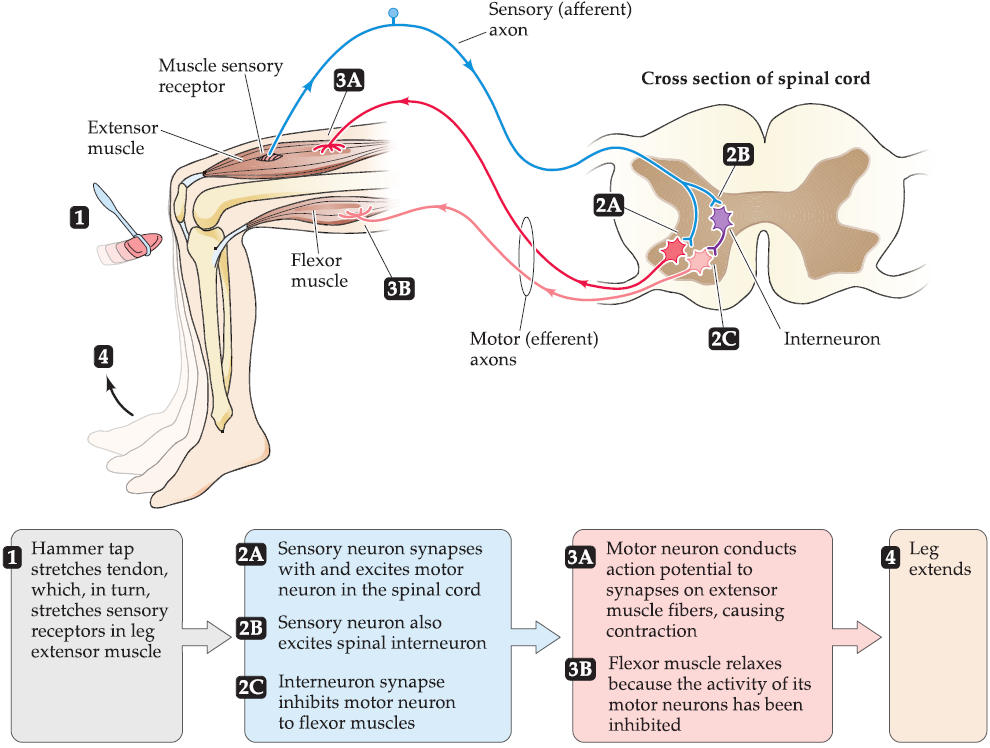
Organization of human nervous system
1. By function
Sensory systems 感官系统: acquiring and processing information from the environment, e.g., the visual system or the auditory system.
Motor systems 运动系统: responding to such information by generating movements and other behavior.
Associational systems: mediating the most complex and least well characterized brain functions.
2. By anatomy
Central nervous system (CNS): brain (cerebral hemispheres, diencephalon, cerebellum, and brainstem) and spinal cord.
Peripheral nervous system (PNS)
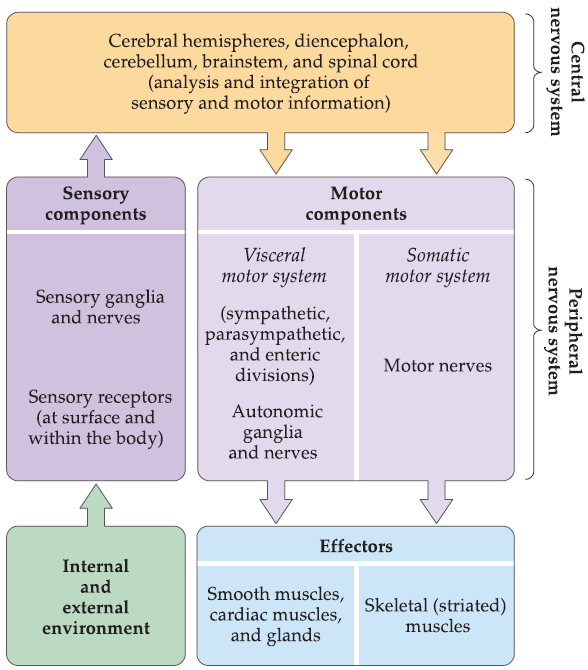
CNS
Somas:
Nuclei: local accumulations of neurons that have roughly similar connections and functions (cerebrum, brainstem and spinal cord)
Cortex (plural, cortices): sheet-like arrays of nerve cells (cerebral hemispheres and cerebellum)
Axons: tracts
PNS
Somas: ganglia(神经节)
Axons: nerves
The motor system: Their somas are located in the CNS while the dendrites are located in the PNS
Survey of human neuroanatomy
1. Neuroanatomical terminology
Axis
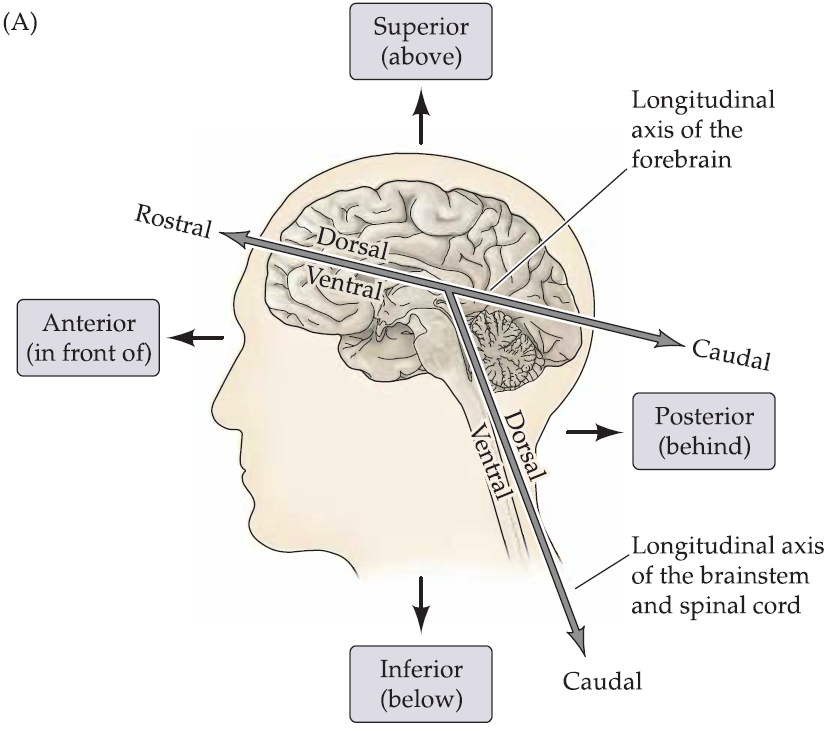
- Superior (above) - Inferior (below)
- Anterior (in front of) - Posterior (behind)
- Dorsal - Ventral
- Rostral - Caudal

Planes of section
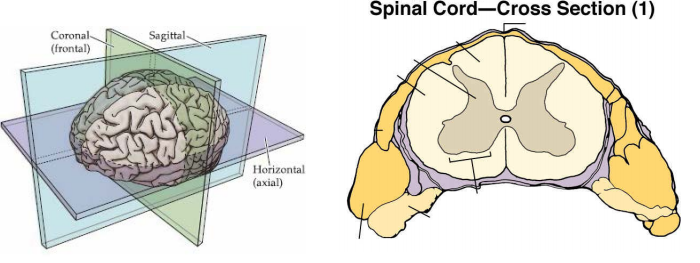
- Coronal section
- Sagittal section
- Horizontal section
2. Basic subdivisions of central nervous system
Forebrain 前脑: diencephalon(间脑), cerebral hemispheres(大脑半球)
Hindbrain 后脑: brainstem(脑干), cerebellum(小脑)
Brainstem: medulla(髓质), pons(脑桥), midbrain(中脑)
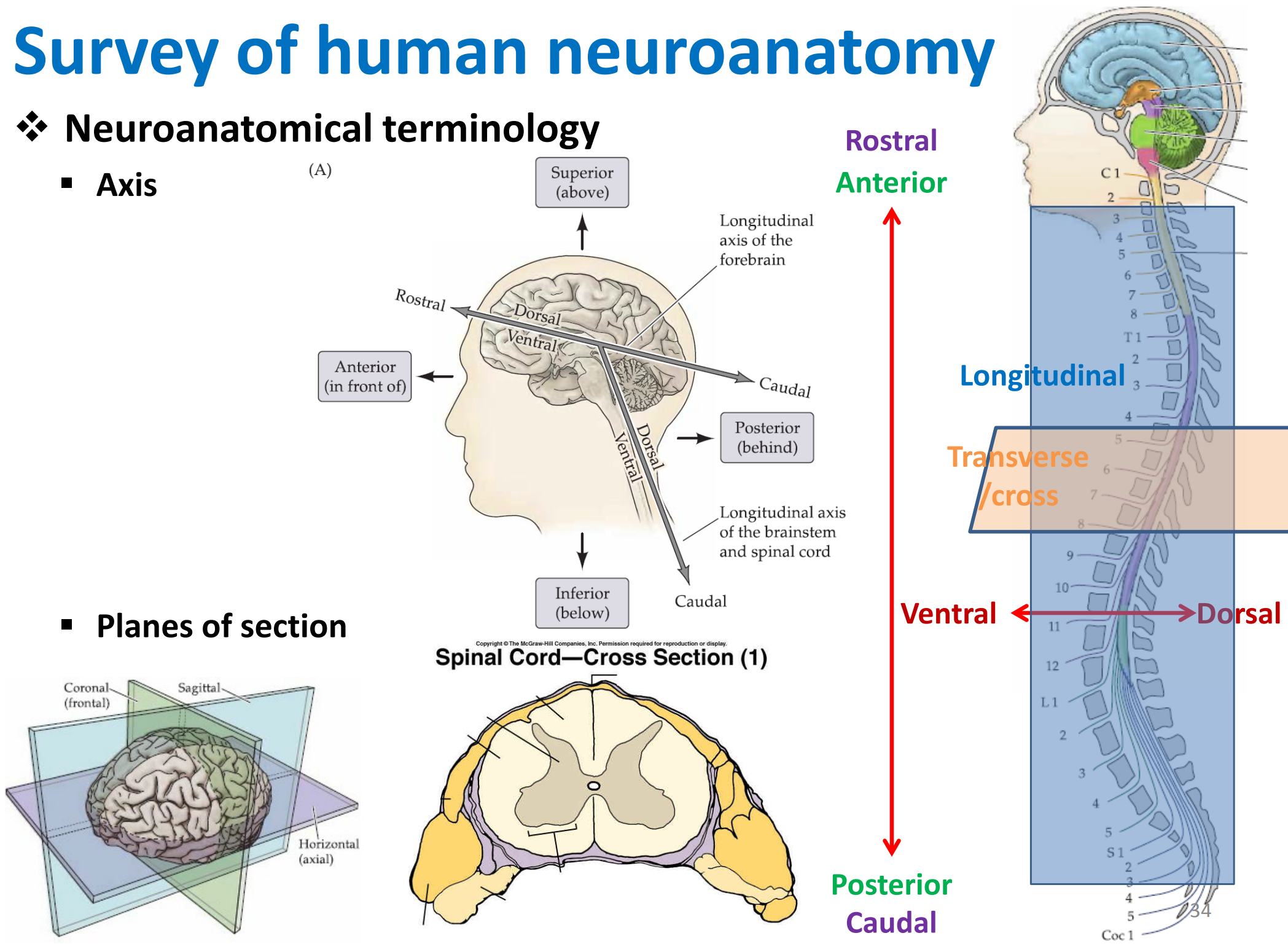
三、Model Organisms in Neuroscience
Some Model Animals
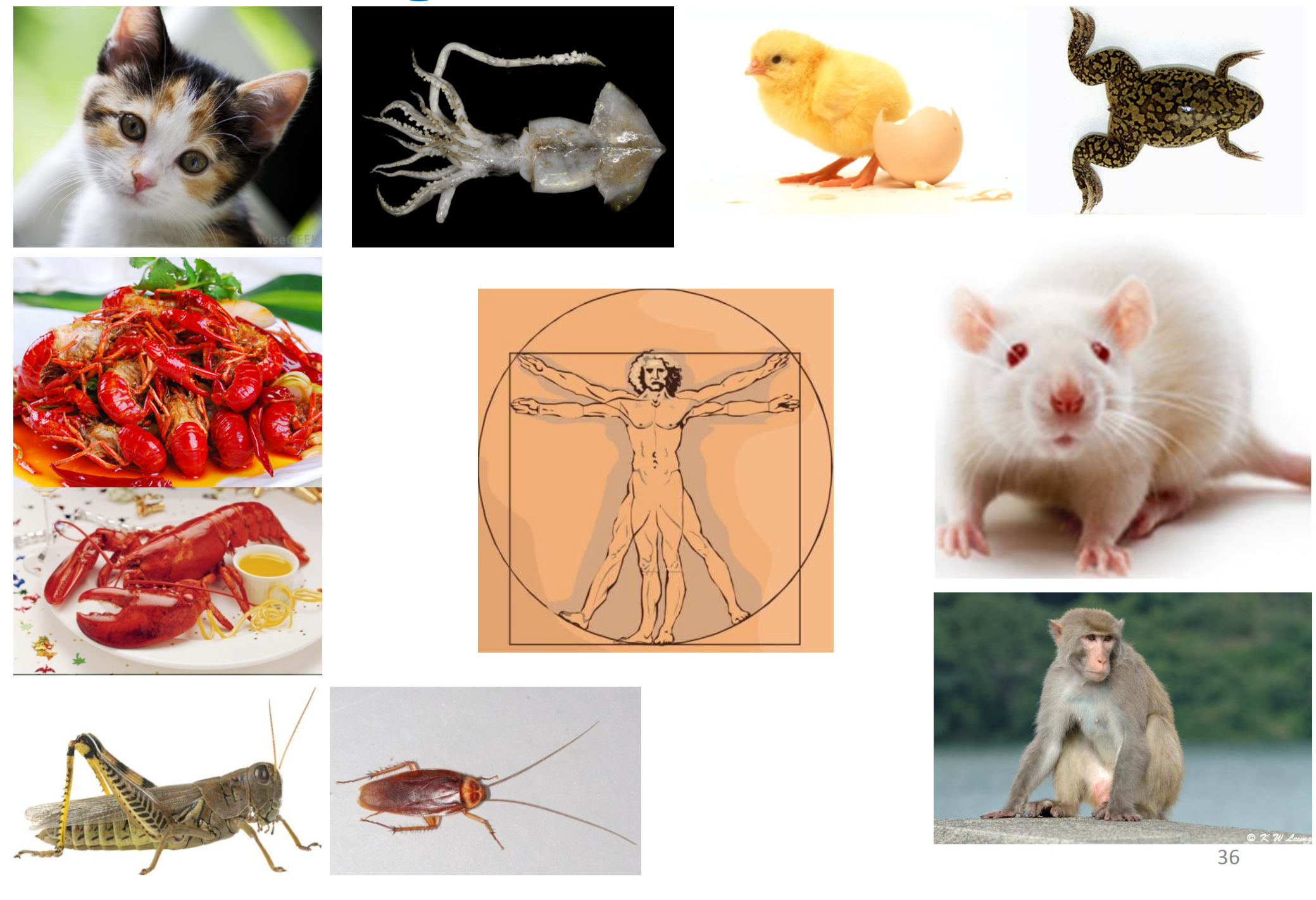
Used model organisms:
- Cat
- Grasshopper
- cockroach
- roster
- squid
- chicken
- frog
- rat
- monkey
Main model organisms (widely used):
- mouse
- zebrafish
- C. elegans
- Drosophila
Forward screening: From phenotype to genotype
Reverse screening: From genotype to phenotype
Gene numbers vs organismal complexity
Gene numbers do not have absolute relationship with complexity
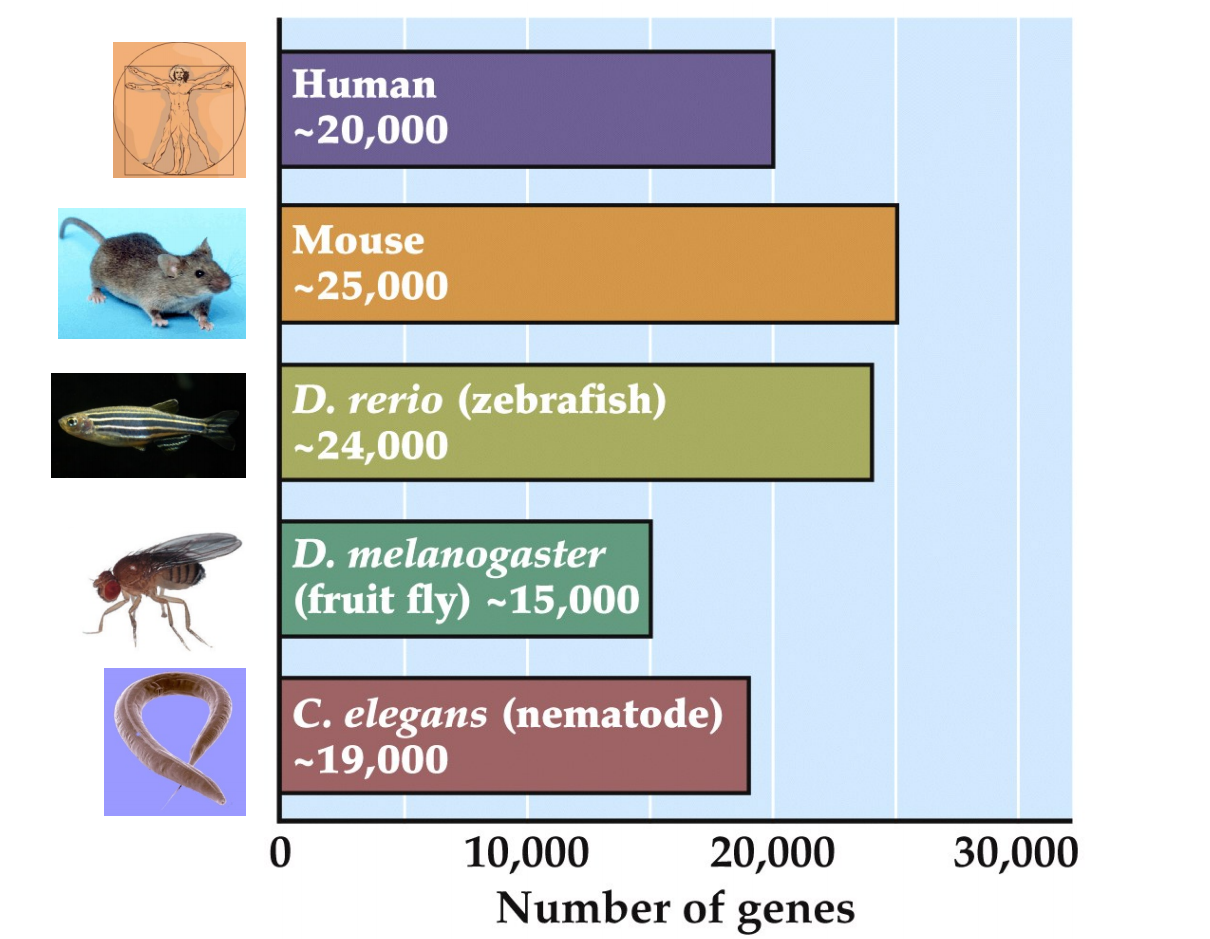
The genome and the brain
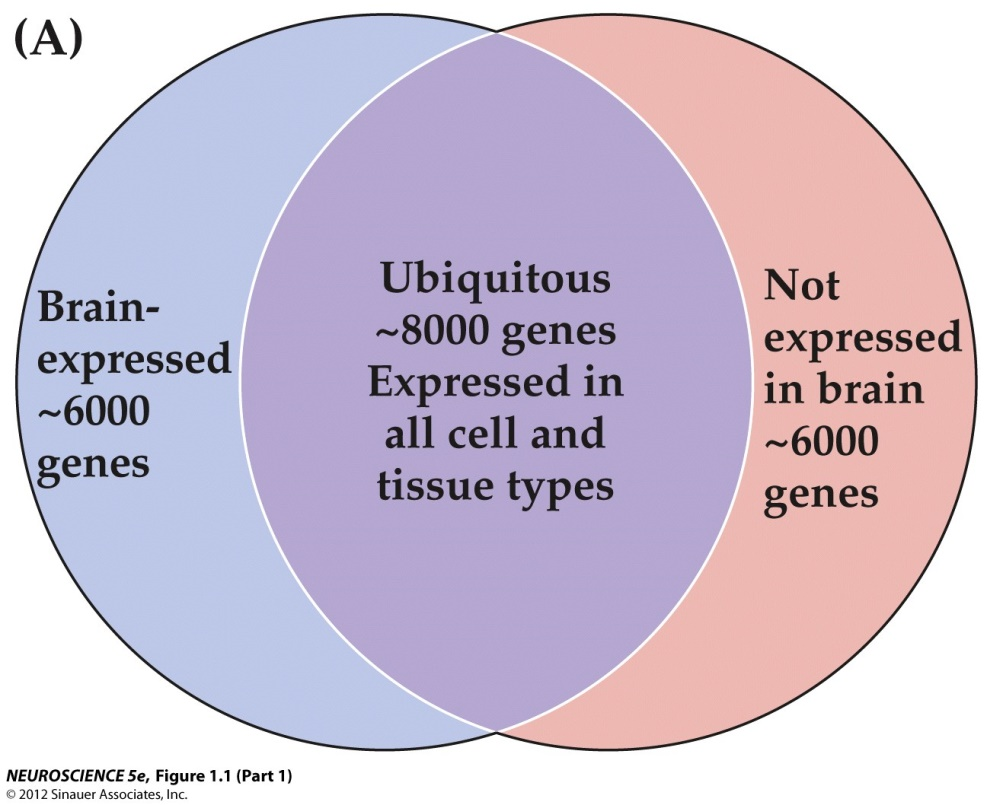
Microcephaly: ASPM mutation
